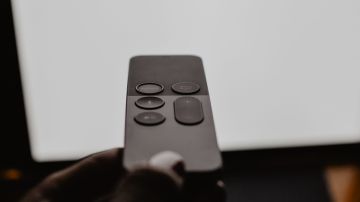“Undone” Was Made For Me and Very Little TV Is
I’m a grown-ass, sophisticated, TV watcher who also happens to be Latina

Photo: Unsplash/Kelly Sikkema
Where are the shows for me? On Amazon apparently — plus Starz’ Vida. Amazon’s Undone is getting lots of attention and I’m here for it. It’s visually stunning (animated with something called “rotoscope”) and intellectually compelling. Its main character is also a Latina with a disability. In case you’re wondering, that pretty much makes Undone a unicorn in terms of representation. Women are underrepresented on screen and women of color even more so. In fact, Latinas are the least represented on television when compared to our numbers in the actual population. Individuals with physical or mental disabilities are almost completely absent from media, even though more than a quarter of adults in the U.S. are disabled.
Undone is a big deal in terms of representation. It may not be perfect — the show’s creators aren’t Latinx and there are problems with how it handles the main character’s deafness — but that doesn’t mean there’s not a lot to enjoy. For one, the show takes Latinidad seriously, making it not a personality quirk of its protagonist, but rather an integral part of the show’s world view — spoilers ahead!
Take the scene in the second-to-last episode where Rosa Salazar’s Alma talks to an indigenous dancer. Their conversation starts with the dancer asking Alma if she’s “mestiza,” a concept I wish more people in the E.E.U.U. understood (if for nothing else, so I could properly identify my race on forms). The dancer then tells Alma, “even though you don’t know the dance, you know the dance,” calling forth our shared but fractured ancestry and providing a pivotal plot point. With that little moment, Undone shows a more complicated understanding of Latinx identity than most shows on the air.
Undone is actually filled with these moments. There’s Alma’s critique of the Alamo: “It’s lauded as a state treasure, but it’s where European settlers, who wanted independence from Mexico, because Mexicans would not let them own slaves, fought and died for their ‘freedom’ to own slaves.” There’s the thoughtful presentation of Catholicism — the church is an obligation for Alma and her sister but a community and place of growth for their mother. There’s even the show’s setting of San Antonio, one of the most Latinx cities in the US, which is lovingly dramatized with Alma’s meet-cute with her boyfriend Sam on the Riverwalk among other scenes.
The casting helps. Three of the main characters are Latina (Constance Marie as Alma’s mom, Angelique Cabral as Alma’s sister, and, of course, Alma herself). The show also features white, Black and South Asain actors thanks to Bob Odenkirk of Breaking Bad fame as Alma’s dad, Daveed Diggs as Alma’s understanding boss, and Siddharth Dhananjay as Alma’s boyfriend. Together they reflect a more accurate depiction of the world we actually inhabit. And whether its Sam’s backstory or Becca’s white in-laws, all of the characters’ racial identities matter. This is a show that understands how our backgrounds guide our identity and don’t let whiteness off the hook.
Undone combines this nuanced understanding of race with prestige TV devices including cutting-edge visuals and a nonlinear timeline to help the show ask its big question: what is reality and can we ever really know it? That’s the stuff of philosophy and art history dissertations and Undone adds to the debate beautifully. The cliffhanger at the end of season one asks viewers if Alma’s time-hopping adventures are real or a delusion and the answer is we don’t know. Certainly, if I met Alma in real life, I’d be with Sam, labeling her a schizophrenic. But seeing her on-screen, I was all in on the other option, not so much as questioning the reality of her ability to travel through time until the very end. I imagine I’m not the only one who feels that the show played on my TV-watching habits to get me to follow them down the rabbit hole before executing a flawless bait and switch.
There are enough hints that it could go either way. How does Alma know her mom was at the lab that night? What about the family’s history of mental illness? So, I’m anxiously awaiting the second season even as I’m expecting it to give more questions than answers. Great TV, like all art, lives in its ambiguity. In the meantime, enjoy Undone, one of the rare shows made for viewers like us: Latinas who seriously watch TV.

















